Just as a painter selects their finest brushes to create a masterpiece, you’ll want to choose the perfect rainforest plants to transform your indoor space into a tropical sanctuary. Your home’s conditions, from the filtered sunlight to stable temperatures, actually mirror many aspects of a rainforest’s understory – making these adaptable species ideal for interior environments. Let’s explore which jungle-dwelling plants will flourish in your urban oasis.
Contents
1. Peace Lily
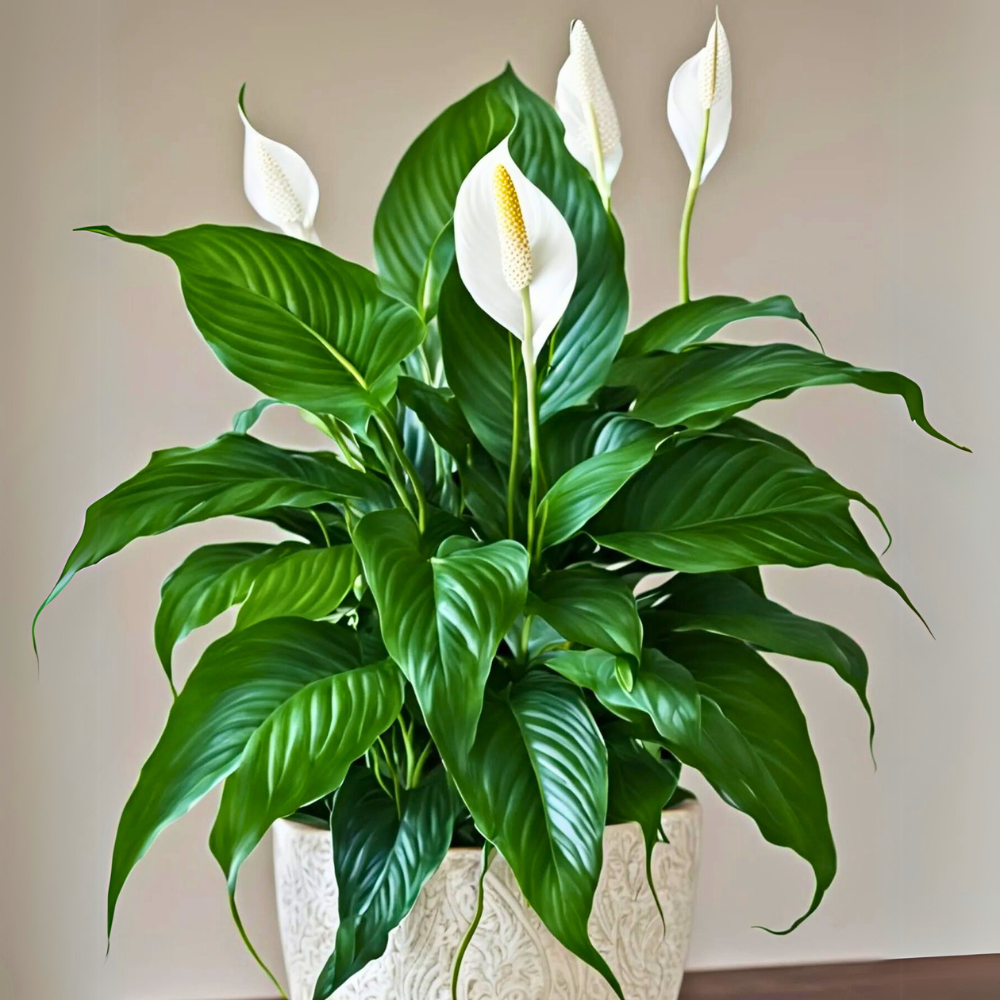
The Peace Lily (Spathiphyllum) is a popular rainforest plant known for its elegant white flowers and glossy dark green foliage. This tropical beauty not only adds a touch of sophistication to indoor spaces but also helps purify the air by removing common household toxins. The plant features long, lance-shaped leaves that grow from the base, creating a lush, fountain-like appearance, while its distinctive flowers consist of a white, hood-like spathe surrounding a protruding spadix.
- Light: Thrives in medium to low indirect light; avoid direct sunlight which can scorch leaves
- Water: Keep soil consistently moist but not waterlogged; water when top inch of soil feels dry
- Soil: Well-draining potting mix rich in organic matter
- Humidity: Prefers high humidity; mist regularly or use a humidity tray
- Temperature: Maintains best growth between 65-80°F (18-27°C)
- Fertilizer: Feed monthly during growing season with balanced liquid fertilizer
- Container: Use pot with drainage holes to prevent root rot
- Toxicity: Keep away from pets and children as all parts are toxic if ingested
2. Swiss Cheese Plant
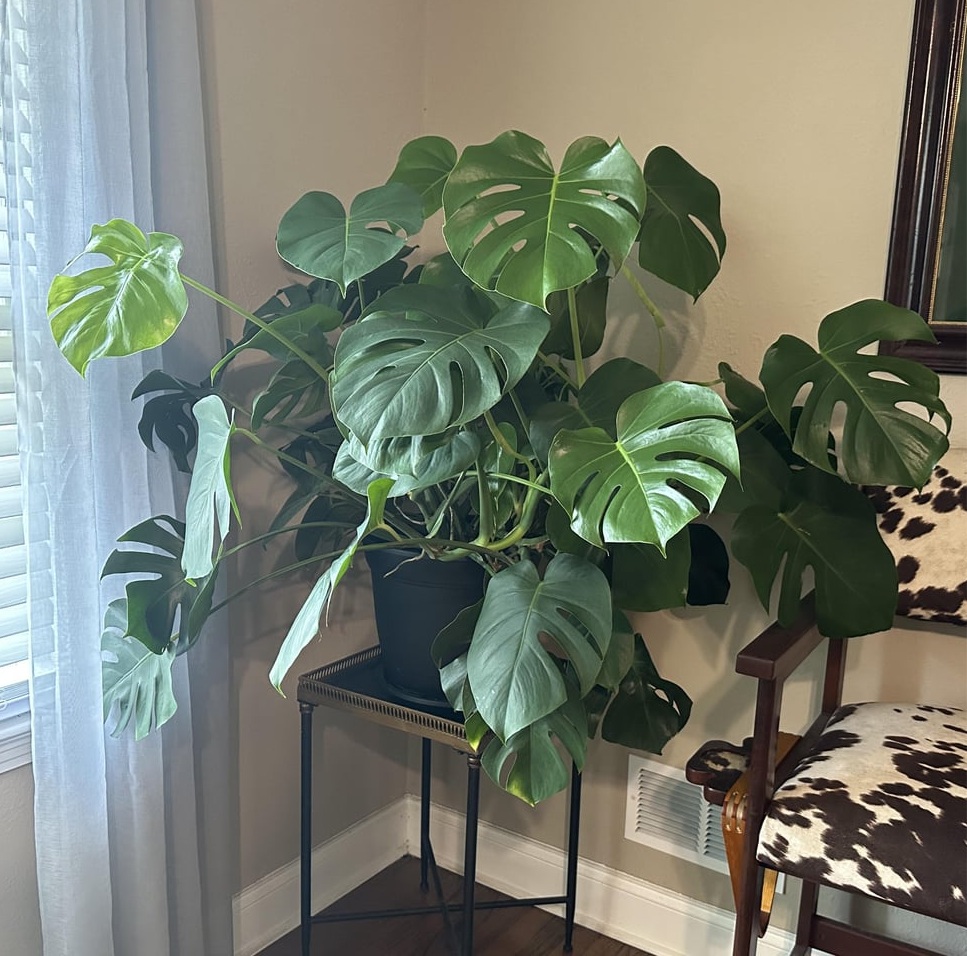
The Swiss Cheese Plant (Monstera deliciosa) is a striking tropical vine known for its large, glossy leaves with distinctive natural holes and splits, giving it its unique “cheese-like” appearance. This popular houseplant can grow quite tall indoors, reaching heights of 6-8 feet with proper support, while its dramatic foliage adds a bold, jungle-inspired element to any interior space. As the plant matures, the leaves become increasingly fenestrated, developing more pronounced perforations and splits that create its characteristic architectural appearance.
- Light: Bright, indirect light; can tolerate moderate shade but may develop fewer holes in leaves; protect from direct sunlight
- Water: Keep soil consistently moist but not waterlogged; water when top 1-2 inches of soil feels dry
- Soil: Well-draining, rich potting mix with added peat moss and perlite
- Humidity: High humidity (50-60%); benefits from regular misting or humidifier
- Temperature: 65-80°F (18-27°C); protect from cold drafts
- Fertilizer: Feed monthly during growing season with balanced liquid fertilizer
- Support: Provide moss pole or trellis for climbing as plant matures
3. Bird’s Nest Fern

The Bird’s Nest Fern (Asplenium nidus) is a striking tropical plant characterized by its wide, wavy-edged fronds that grow in a rosette pattern, resembling a bird’s nest from above. These elegant fronds can reach up to 2-4 feet in length and have a bright apple-green color with a prominent black midrib running down their center. As an epiphytic fern native to tropical rainforests, it naturally grows attached to tree trunks but adapts well to pot cultivation in indoor environments.
- Light: Moderate to bright indirect light; avoid direct sunlight which can scorch the leaves
- Water: Keep soil consistently moist but not waterlogged; mist regularly to maintain humidity
- Soil: Well-draining, organic potting mix rich in humus; ideal pH 5.0-5.5
- Humidity: High humidity (50-80%); use humidity tray or humidifier if needed
- Temperature: Warm conditions between 65-80°F (18-27°C)
- Fertilizer: Light feeding with balanced liquid fertilizer monthly during growing season
- Container: Container with adequate drainage; can also be mounted on boards or bark
4. Chinese Evergreen

The Chinese Evergreen (Aglaonema) is a striking tropical plant known for its graceful, variegated foliage that comes in various patterns of green, silver, and sometimes pink or red. Its broad, oval-shaped leaves grow in clusters close to the ground, creating an attractive, compact appearance that makes it perfect for both floor plantings and tabletop displays. This hardy rainforest native has earned its reputation as one of the most adaptable and forgiving houseplants, making it an excellent choice for beginners.
- Light: Tolerates low to medium indirect light; avoid direct sunlight which can burn leaves
- Water: Keep soil consistently moist but not waterlogged; water when top 1-2 inches of soil feels dry
- Soil: Well-draining, rich potting mix with good organic content
- Humidity: Thrives in moderate to high humidity; mist leaves regularly or use a humidity tray
- Temperature: Maintains best growth between 65-80°F (18-27°C)
- Fertilizer: Feed with balanced liquid fertilizer every 6-8 weeks during growing season
- Pot Requirements: Container with drainage holes; repot every 2-3 years
5. Red Prayer Plant
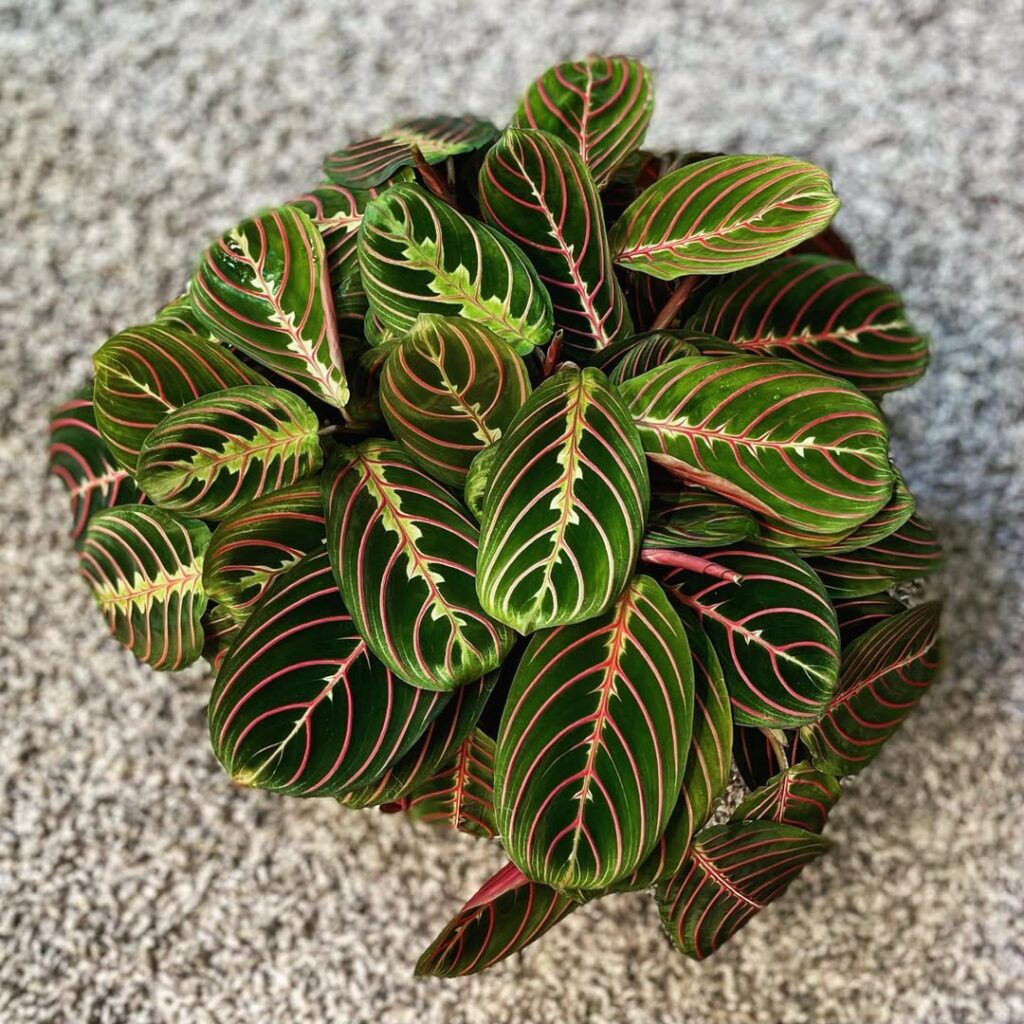
The Exotic Red Prayer Plant (Maranta leuconeura erythroneura) is a striking tropical plant known for its distinctive oval-shaped leaves marked with bright red veins against deep green foliage. This plant gets its common name from its unique daily movement – the leaves fold up at night like praying hands and open again at dawn. Growing low and spreading, it typically reaches heights of 6-12 inches, making it perfect for hanging baskets or as ground cover in indoor arrangements.
- Light: Bright indirect light; avoid direct sunlight which can fade leaf patterns
- Water: Keep soil consistently moist but not waterlogged; water when top inch of soil feels dry
- Humidity: High humidity (50-60%); mist regularly or use a humidity tray
- Temperature: 65-80°F (18-27°C); protect from cold drafts
- Soil: Well-draining, rich potting mix with organic matter
- Fertilizer: Feed monthly during growing season with balanced liquid fertilizer
- pH: 5.5-6.0 (slightly acidic)
- Propagation: Division of rhizomes or stem cuttings in spring
6. Calathea Rattlesnake
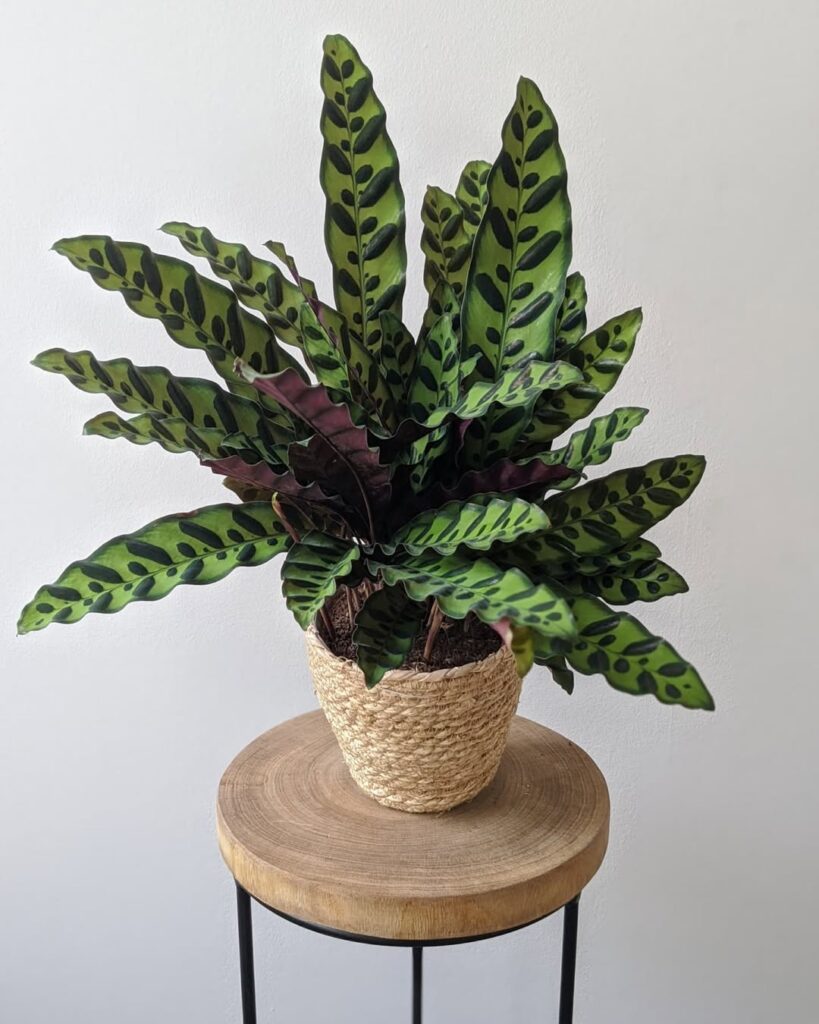
Calathea Rattlesnake (Calathea lancifolia) is a striking tropical plant known for its distinctive wavy, lance-shaped leaves marked with dark green spots and bands on a lighter green background, resembling snakeskin. The undersides of its leaves display a rich purple hue, and like other prayer plants, its leaves move throughout the day, folding up at night and opening again in the morning. This compact plant typically grows to about 2-3 feet tall, making it an excellent choice for indoor spaces where its dramatic foliage can create a focal point.
- Light: Bright indirect light; avoid direct sunlight which can fade the leaf patterns
- Water: Keep soil consistently moist but not waterlogged; water when top inch of soil feels dry
- Humidity: High humidity (60% or higher); use humidifier or pebble tray
- Temperature: 65-80°F (18-27°C)
- Soil: Well-draining, rich potting mix with organic matter
- Fertilizer: Feed monthly during growing season with balanced liquid fertilizer
- pH: 6.0-6.5 (slightly acidic)
- Pot: Container with drainage holes to prevent root rot
7. Philodendron Brasil
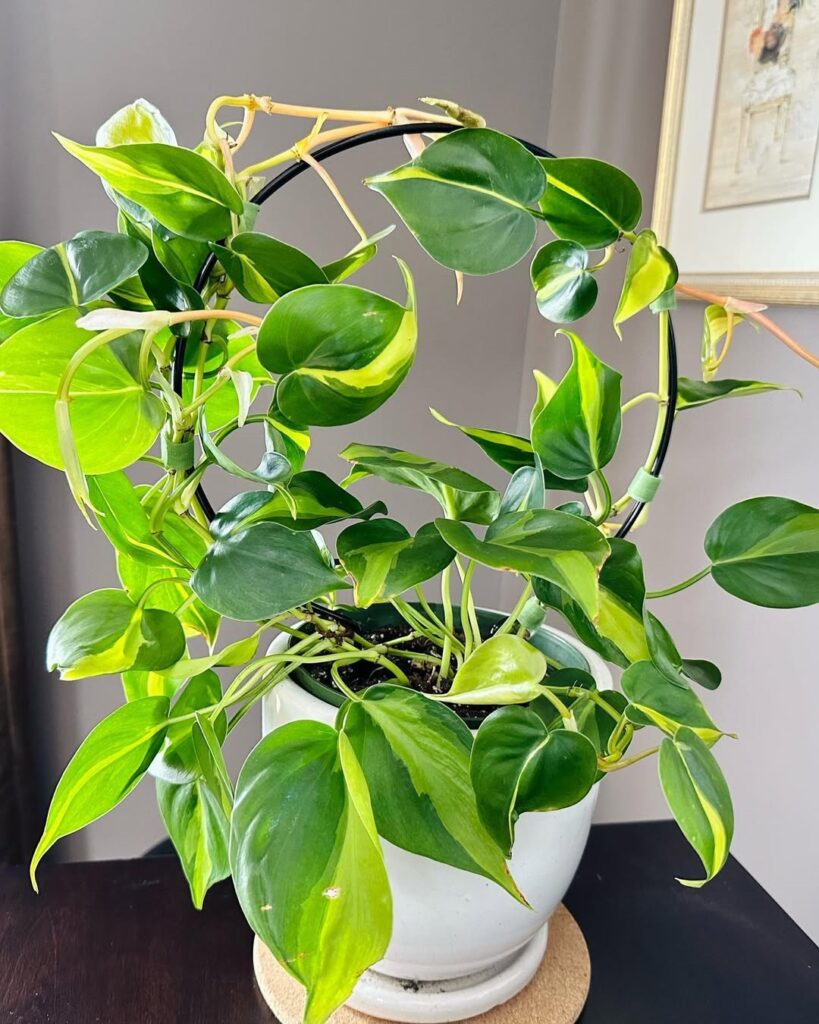
Philodendron Brasil is a striking tropical vine characterized by its heart-shaped leaves featuring vibrant lime-green variegation along dark green foliage. This cultivar of Philodendron hederaceum adds an elegant touch to indoor spaces with its trailing vines that can either climb up supports or cascade from hanging baskets. Each leaf displays unique patterns of yellow and green, making it a standout choice for adding visual interest to any room.
- Light: Bright, indirect light; can tolerate medium light but avoid direct sun
- Water: Allow top 1-2 inches of soil to dry between waterings; reduce in winter
- Soil: Well-draining, rich potting mix with organic matter
- Humidity: Prefers 60% or higher; mist regularly or use a humidity tray
- Temperature: 65-80°F (18-27°C)
- Fertilizer: Monthly feeding during growing season with balanced houseplant fertilizer
- Support: Provide moss pole or trellis for climbing growth habit
- Container: Use pot with drainage holes to prevent root rot
8. Croton
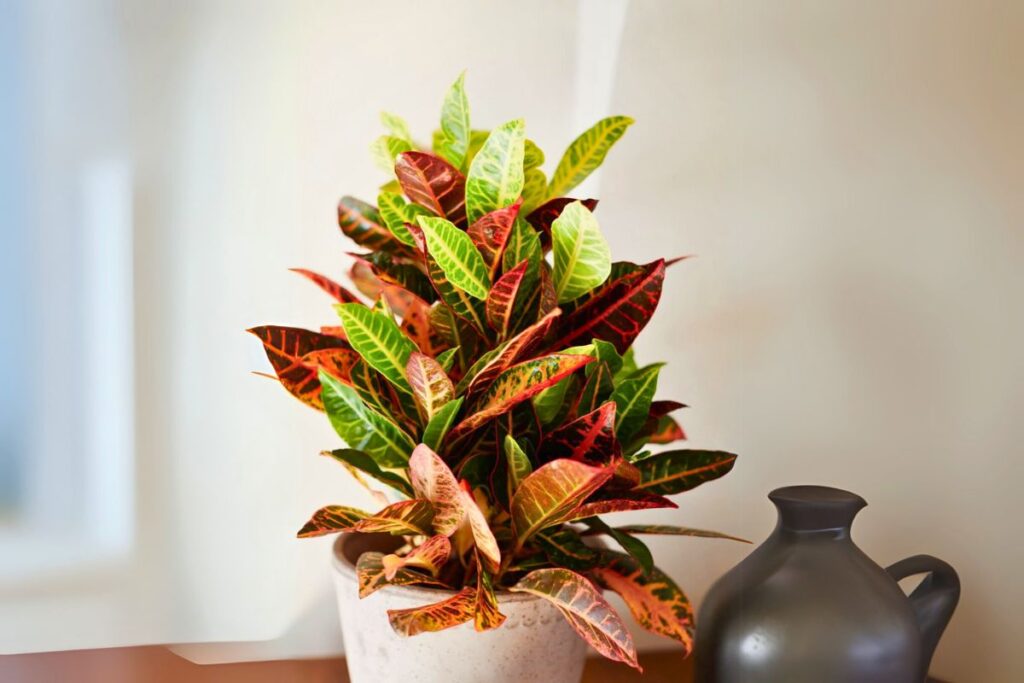
Croton plants (Codiaeum variegatum) bring the vibrant colors of the rainforest indoors with their striking foliage that features bold patterns in yellow, orange, red, pink, and deep green. These tropical showstoppers have thick, leathery leaves that can be oval, twisted, or even curled, creating a dramatic display that changes color as the plant matures, with each leaf presenting its own unique pattern and color combination.
- Light: Bright, indirect sunlight; some direct morning sun acceptable; more light intensifies leaf colors
- Water: Keep soil consistently moist but not waterlogged; reduce watering in winter
- Humidity: High humidity (50-80%); regular misting or use of humidity tray recommended
- Temperature: 60-80°F (15-27°C); protect from cold drafts
- Soil: Well-draining, rich potting mix with high organic content
- Fertilizer: Feed monthly during growing season with balanced liquid fertilizer
- Repotting: Every 2-3 years in spring when roots become crowded
9. Rubber Tree
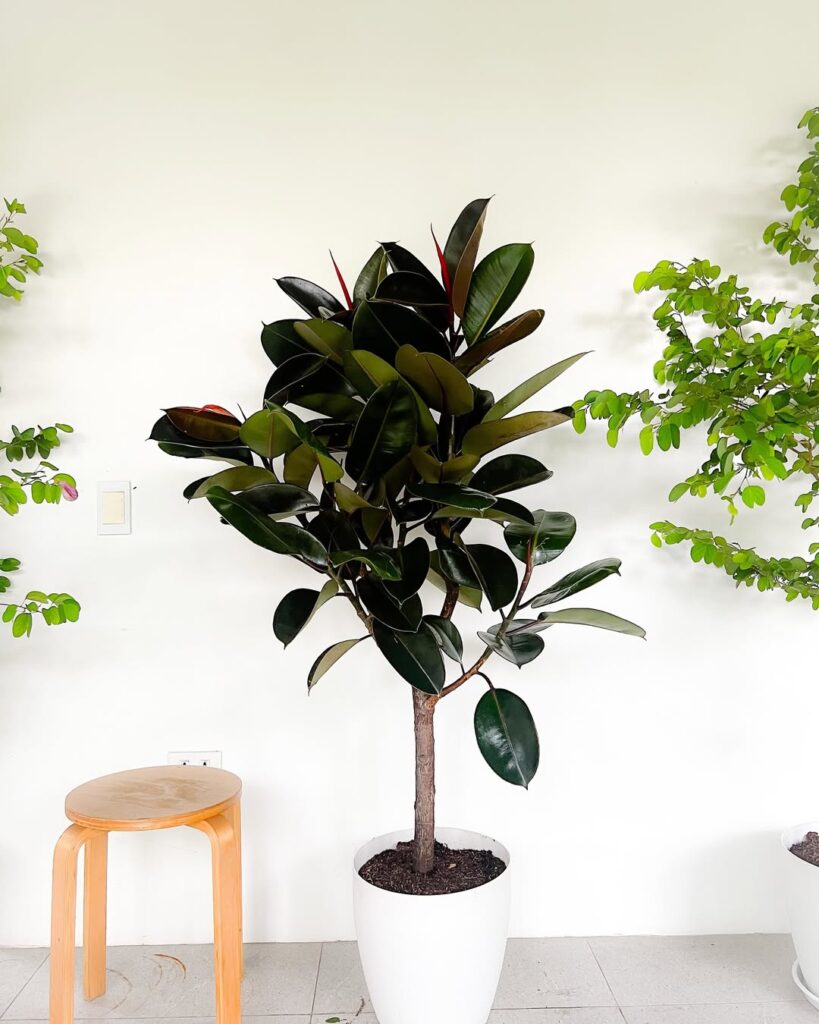
The Majestic Rubber Tree (Ficus elastica) is a striking indoor plant known for its large, glossy leaves and impressive height potential, capable of growing up to 10 feet tall indoors. Native to Southeast Asia’s tropical regions, this popular houseplant features thick, leathery leaves in deep green, burgundy, or variegated patterns. Its broad oval leaves can grow up to 12 inches long and naturally produce a waxy shine that adds drama to any indoor space. When grown as a houseplant, the rubber tree maintains a tree-like form with a sturdy trunk and branches that develop over time.
- Light: Bright, indirect light; can tolerate some direct morning sun; protect from harsh afternoon sunlight
- Water: Allow top 1-2 inches of soil to dry between waterings; reduce watering in winter
- Soil: Well-draining, rich potting mix with good aeration
- Humidity: Moderate to high; benefits from regular misting
- Temperature: 60-80°F (15-27°C)
- Fertilizer: Feed monthly during growing season with balanced liquid fertilizer
- Repotting: Every 2-3 years when root-bound
- Growth Support: May need staking when young or if growing tall
10. Pearl Vine
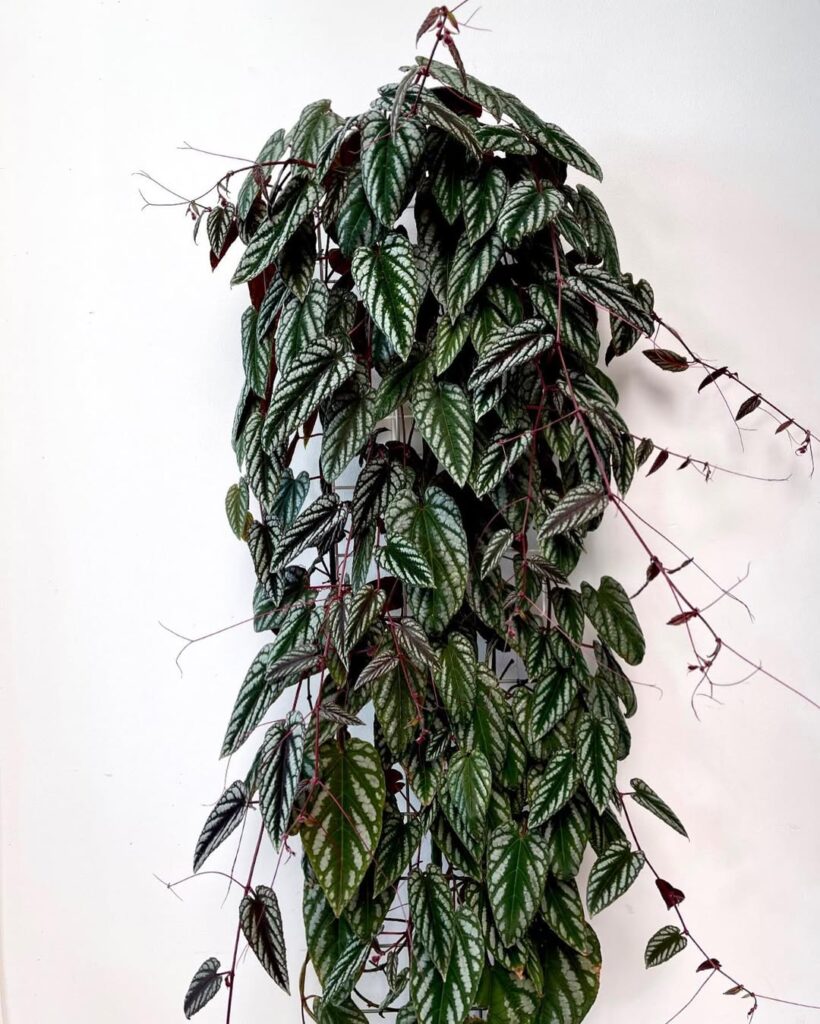
Pearl Vine (Cissus discolor) is a tropical vine known for its heart-shaped, dark green leaves with a glossy finish and distinctive pearly sheen. This philodendron variety can climb several feet high when supported by a moss pole or trellis, making it an excellent choice for adding vertical interest to indoor spaces. The leaves develop a deeper color and more pronounced pearl-like iridescence as the plant matures, while new growth emerges in lighter shades of green.
- Light: Bright, indirect light; avoid direct sunlight which can scorch leaves
- Water: Keep soil consistently moist but not waterlogged; water when top 1-2 inches of soil feels dry
- Soil: Well-draining, rich potting mix with added orchid bark and perlite
- Humidity: Minimum 60% humidity; benefits from regular misting
- Temperature: 65-80°F (18-27°C)
- Support: Requires moss pole or trellis for climbing
- Fertilizer: Monthly feeding during growing season with balanced houseplant fertilizer
11. Elephant Ear Plant
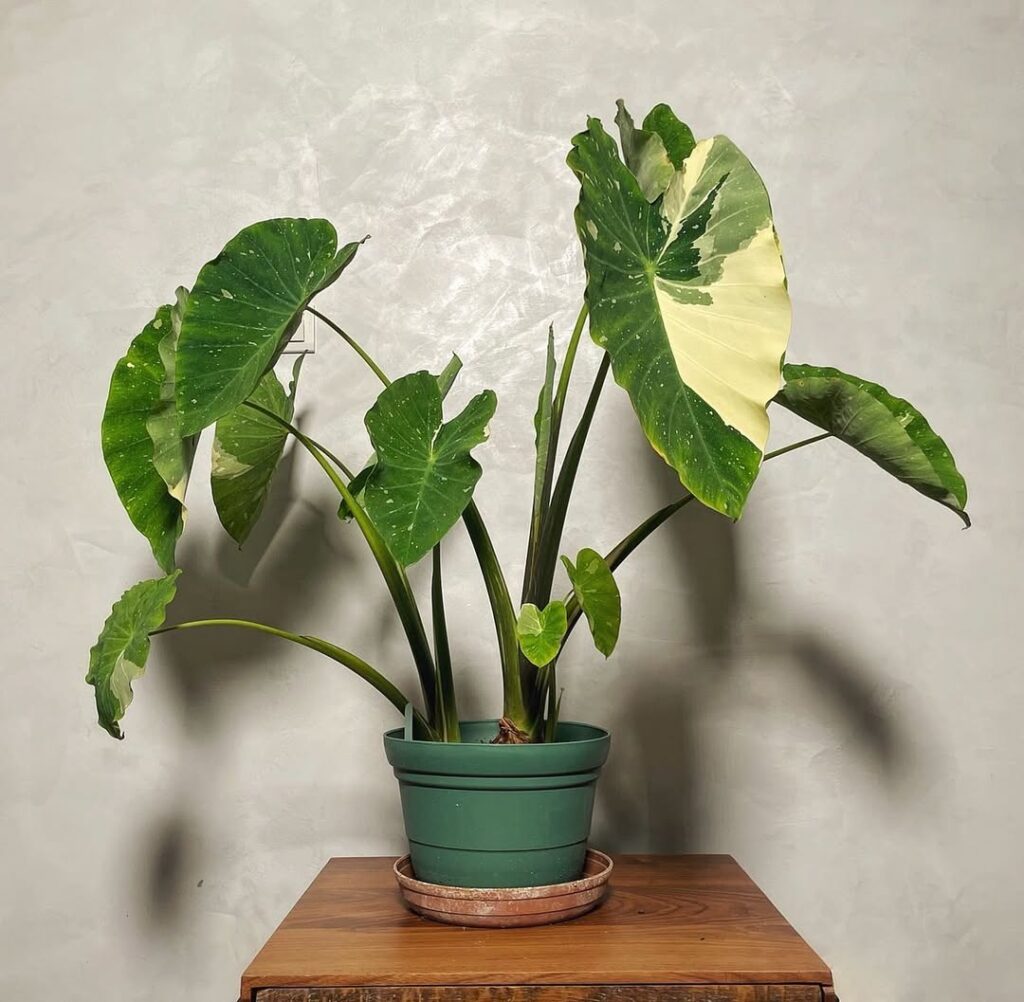
The Elephant Ear Plant (Colocasia) is a dramatic tropical specimen that makes a bold statement in indoor spaces with its massive, heart-shaped leaves that can grow up to 3 feet long. Named for its distinctive foliage that resembles elephant ears, this plant adds an instant jungle feel to any room. While naturally growing in rainforest understories, it adapts well to container growing and can thrive as a houseplant with proper care and conditions.
- Light: Bright, indirect light; can tolerate partial shade but avoid direct sunlight which can scorch leaves
- Water: Keep soil consistently moist but not waterlogged; water deeply when top inch of soil feels dry
- Soil: Rich, well-draining potting mix with high organic matter content
- Humidity: High humidity (60-70%); regular misting or use of humidity tray recommended
- Temperature: Warm conditions between 65-85°F (18-29°C)
- Fertilizer: Monthly feeding during growing season with balanced liquid fertilizer
- Container: Large pot with adequate drainage holes to accommodate extensive root system
- pH Level: Slightly acidic to neutral (6.0-7.0)
12. Kentia Palm

The Kentia Palm is a majestic tropical plant known for its elegant, feather-like fronds that arch gracefully from a slender trunk. Native to rainforest regions, this palm variety typically grows to 6-8 feet tall indoors and features deep green pinnate leaves that can span up to 4 feet in length. Its compact growth habit and striking appearance make it an excellent choice for adding vertical interest and tropical flair to indoor spaces, particularly in areas with high ceilings.
- Light: Bright indirect light; can tolerate moderate shade but avoids direct sunlight
- Water: Keep soil consistently moist but not waterlogged; water when top inch of soil feels dry
- Humidity: Requires high humidity levels (60-80%); benefits from regular misting
- Temperature: 65-80°F (18-27°C); protect from cold drafts
- Soil: Well-draining, rich potting mix with added organic matter
- Fertilizer: Feed monthly during growing season with balanced liquid fertilizer
- Container: Use pot with adequate drainage holes; repot every 2-3 years
- Air Quality: Tolerates average indoor air conditions; benefits from good air circulation
13. Boston Fern
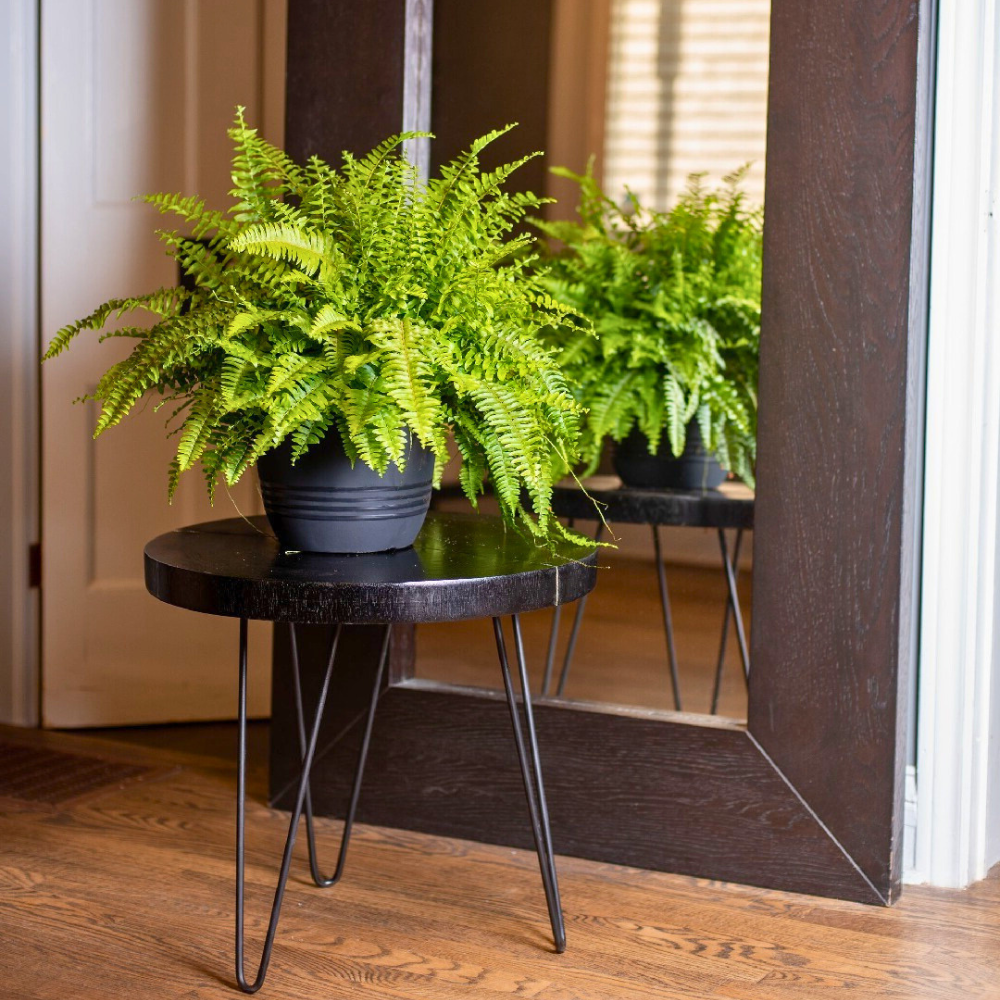
The Boston Fern (Nephrolepis exaltata) is a classic, air-purifying houseplant known for its lush, arching fronds and feathery leaflets. Native to tropical and subtropical regions, this fern thrives in indoor spaces with consistent moisture and indirect light. Its graceful, cascading foliage makes it a favorite for hanging baskets and pedestal planters.
- Light: Bright, indirect light; avoid direct sunlight which can scorch the leaves
- Water: Keep soil consistently moist but not waterlogged; mist regularly to maintain humidity
- Soil: Well-draining, rich potting mix with high organic content
- Humidity: Requires high humidity levels (60-80%)
- Temperature: 60-75°F (16-24°C)
- Fertilizer: Feed monthly during growing season with balanced liquid fertilizer
- Container: Use hanging baskets or containers with support structures
- pH: Slightly acidic to neutral (6.0-7.0)
14. English Ivy
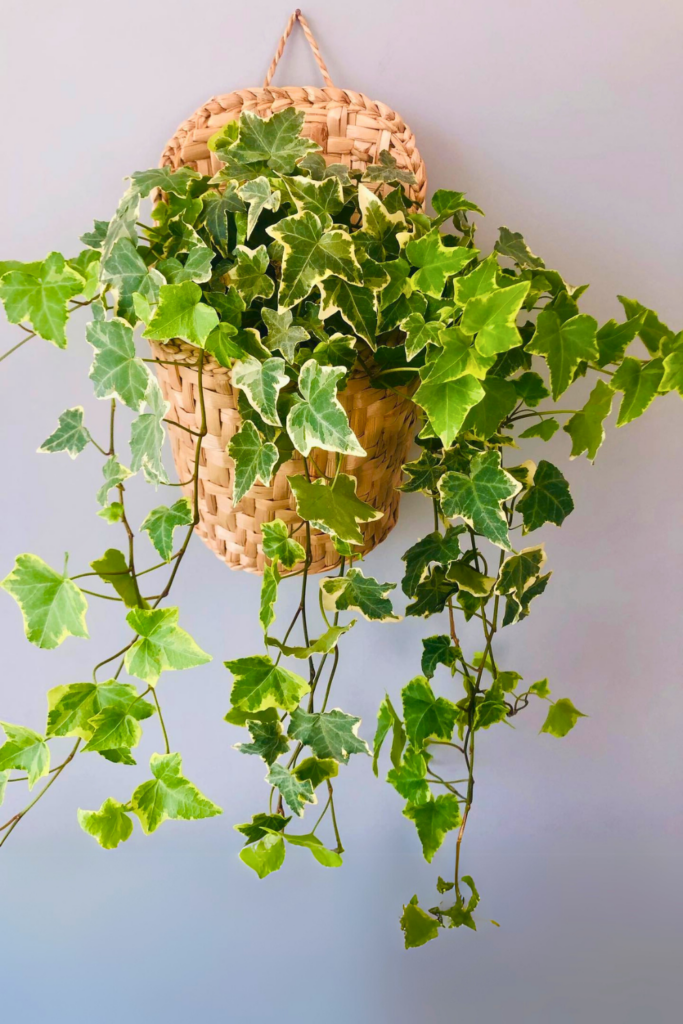
English Ivy (Hedera helix) is a versatile cascading plant native to European woodlands that adapts well to indoor environments, making it an excellent choice for recreating a rainforest atmosphere. Its long, trailing vines adorned with distinctive lobed leaves can grow several feet in length, creating dramatic cascades from hanging baskets or climbing up support structures. The plant’s deep green, glossy foliage provides a lush aesthetic while also helping purify indoor air.
- Light: Bright to moderate indirect light; avoid direct sunlight which can scorch leaves
- Water: Keep soil consistently moist but not waterlogged; water when top inch of soil feels dry
- Soil: Well-draining potting mix rich in organic matter
- Humidity: Prefers moderate to high humidity; regular misting benefits growth
- Temperature: Thrives in 60-70°F (15-21°C)
- Fertilizer: Feed monthly during growing season with balanced liquid fertilizer
- Container: Use containers with drainage holes; hanging baskets or pots with climbing supports ideal
15. Rex Begonia

Rex Begonias are striking tropical plants renowned for their bold, asymmetrical foliage and intricate patterns. Their leaves can range from deep burgundy to vibrant purple, often highlighted by metallic sheens and dark veining. This compact, bushy plant thrives indoors, making it a perfect addition to tabletops or shaded garden arrangements.
- Light: Bright, indirect light; avoid direct sun to prevent leaf scorch
- Water: Keep soil moderately moist; let the top inch dry out between waterings
- Soil: Well-draining, organic-rich mix with peat or coco coir
- Humidity: High humidity (50-70%); mist occasionally or use a pebble tray
- Temperature: 60-75°F (15-24°C); protect from cold drafts
- Fertilizer: Feed biweekly with diluted balanced fertilizer during active growth
- pH: 5.5-6.5
